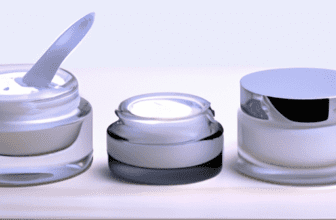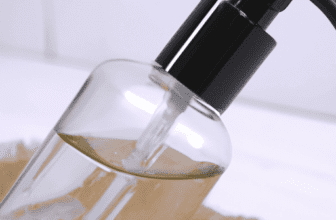Folliculitis Gram-Negative: Understanding and Treating this Skin Condition
What is Folliculitis Gram-Negative?
To understand and treat folliculitis gram-negative, you need to learn about its definition and causes, symptoms and diagnosis, and risk factors. Knowing these sub-sections will help you get a better idea of what causes this skin condition, how it manifests, and the factors that increase your chances of developing it.
Definition and Causes
Gram-negative folliculitis is a type of bacterial infection that affects the hair follicles in the skin. It is often caused by prolonged antibiotic use. This can disrupt the balance of bacteria and lead to an overgrowth of harmful species.
It develops in individuals who took antibiotics for acne or other conditions. The bacteria are resistant to common treatments and can cause redness, swelling, itching, and nodules or pustules. It may be mistaken for acne vulgaris or other infections. Prompt diagnosis and treatment are crucial to prevent complications and scarring.
With proper care and management, most cases of Gram-negative folliculitis can be treated. It is important to work closely with a qualified healthcare professional for tailored treatment.
For example, one patient with Gram-negative folliculitis felt embarrassed about their condition. Their dermatologist prescribed a combination of medications and antibiotics. This helped clear their skin and boost their confidence. But why go to a doctor when you can just play connect-the-dots with your skin?
Symptoms and Diagnosis
Folliculitis Gram-Negative can cause a range of symptoms. These may include pimple-like bumps, itching, soreness, and redness. A doctor can diagnose it with a physical examination or skin culture.
If not treated, it can lead to scarring and further infection. It could also be mistaken for other skin conditions like acne or razor burn. See a doctor if symptoms persist or worsen.
Antibiotics are a common treatment. But there are some self-care measures too. These are: keeping the affected area clean and dry, avoiding tight clothing, and using warm compresses. Until symptoms have gone, don’t shave the affected area.
Risk factors
Individuals with certain medical conditions, weak immune systems, and bad hygiene are prone to Folliculitis Gram-Negative. This bacterial skin infection can also develop from exposure to contaminated water or contact with infected people. To help avoid it, don’t share personal items, keep your skin clean and dry, and practice good hygiene. A study from the International Journal of Microbiology found that using antibiotics for a long time might increase the risk of getting this condition.
To battle Folliculitis Gram-Negative, antibiotics and better hygiene are key!
Treatment of Folliculitis Gram-Negative
To treat your Gram-Negative Folliculitis, you need to explore effective solutions such as medications, topical creams and gels, lifestyle changes, and oral antibiotics. Each of these has unique properties that can help you manage the symptoms of the condition.
Medications
Gram-Negative Folliculitis can be treated with meds. Docs might prescribe tetracyclines, macrolides, fluoroquinolones and trimethoprim-sulfamethoxazole based on your medical history and infection severity.
Mild cases can be treated with topical antibiotics, while more severe infections may need a combo of topical and oral antibiotics. Some dermatologists suggest Isotretinoin in low doses for patients that don’t respond to traditional methods.
It’s important to take the full course of meds just like your physician said. Not doing so can lead to bacterial resistance and worse symptoms.
One example is a 40-year-old man. After his renal transplantation he got poor wound healing, skin infections and gram-negative folliculitis. The treatment entailed a combo of oral ciprofloxacin with intravenous amikacin that was later replaced by piperacillin-tazobactam depending on the lab results. After 8 days of antibiotics, there was a reduction in inflammation and complete resolution in 2 weeks.
Topical creams and gels
For treating infections caused by Gram-negative bacteria, topical meds are available. These come in the form of creams and gels, designed to fight off bacterial infections.
- Topical creams and gels usually contain antibiotics such as mupirocin, clindamycin or erythromycin.
- These antibiotics help to destroy harmful bacteria, while decreasing inflammation and infection-related symptoms.
- Some meds may also include corticosteroids, to reduce inflammation and itching.
- It’s important to use these medications as prescribed by a doctor.
- Frequent application of topical creams and gels is important for maximum effect.
- Potential side effects include skin irritation, redness or rash. Seek medical advice if serious side effects occur.
The unique aspect of topical creams and gels for Gram-negative infections is that they can be applied directly to the affected area. This targeted treatment helps avoid systemic side effects from oral meds.
In the past, people used natural remedies like honey or garlic to treat skin infections. Now, we have a variety of options available, including topical creams and gels – which weren’t available a few generations ago! Who needs a social life when you can just change your folliculitis treatment?
Lifestyle changes
Combatting Folliculitis caused by Gram-negative bacteria requires certain changes in lifestyle. These include:
- good hand hygiene
- wearing loose-fitting clothing
- using a suitable moisturizer
- refrain from sharing personal items with others
Good hygiene habits such as washing hands and keeping the affected area dry and clean can prevent such infections. Breathable fabrics like cotton help reduce irritation and damage to skin. Moisturizers help keep the skin soft, thus making it less prone to bacterial attacks.
Avoiding contact with or sharing towels and other personal items is vital for treating Folliculitis. If you follow these preventive steps, it’ll help you in healing from this infection. Don’t take your health lightly – if the condition doesn’t improve, seek medical help.
Oral antibiotics
For treating Gram-Negative Folliculitis, oral antibiotics have shown great improvement. Trimethoprim-sulfamethoxazole, tetracyclines, and macrolides are the initial antibiotics prescribed. If these don’t work, fluoroquinolones or aminoglycosides may be prescribed.
It is vital to complete the course of antibiotics as suggested by the physician. Also, taking probiotics can help with gut flora diversity during treatment.
Pro Tip: Topical agents should not be used on their own, as this may lead to drug-resistant bacteria. To keep away from Gram-Negative Folliculitis, do not pick at anything and maintain good hygiene.
Prevention of Folliculitis Gram-Negative
To prevent the occurrence of Folliculitis Gram-Negative, you can take several measures. With this section titled “Prevention of Folliculitis Gram-Negative,” you will gain insight into how you can avoid contracting this skin condition. The sub-sections “Hygiene practices,” “Avoiding triggers,” and “Keeping skin healthy” offer various solutions to this common skin problem.
Hygiene practices
Maintaining proper hygiene is a must for preventing Gram-negative folliculitis. Make sure to:
- Wash hands before touching face or using makeup tools.
- Regularly change bedding, towels, or any items that come into contact with your skin.
- Never share items like razors, towels, or makeup brushes.
- If you sweat a lot, take a shower and wash breakouts-prone areas twice daily.
You should use appropriate products like acne scrubs or antibacterial soaps for skincare routines. If an infection occurs due to poor hygiene, see a dermatologist ASAP.
Back in the early 1900s, medical professionals didn’t believe handwashing was necessary. This resulted in preventable deaths since doctors never washed their hands between surgeries. The importance of cleanliness wasn’t known until Dr. Oliver Wendell Holmes Sr., who promoted sterilization standards in 1843.
So, if you want to dodge folliculitis triggers, make sure to practice good hygiene!
Avoiding triggers
Minimizing Risk of Gram-Negative Folliculitis
Preventing folliculitis means avoiding its triggers. Here’s how:
- Wear loose clothing that doesn’t trap heat and moisture
- Keep your skin clean and dry
- Don’t share personal items with others
- Don’t shave too close
- Use mild soaps and skincare products for your skin type
Also, try to limit time spent in hot tubs. They can be full of bacteria and cause infections. Good hygiene helps too. Wash your hands before touching your face, especially after petting animals.
Pro Tip: If you think you have folliculitis, get help quickly. Avoid scarring and spreading the infection!
Keeping skin healthy
Healthy Skin Maintenance Tips
To keep skin healthy, implement proper skincare routines. These include daily cleansing, moisturizing and using sunscreen. Good nutrition, exercise and stress management also impact skin health. Get seven to eight hours of sleep for optimal skin restoration. Hydrate by drinking water throughout the day. Avoid smoking and heavy alcohol consumption as they damage skin cells.
Prevention of Folliculitis Gram-Negative
Bacteria on our bodies can cause folliculitis gram-negative. This infection shows as small bumps with redness around hair follicles. To prevent it, practice good hygiene. Shower after working out, don’t share towels or clothing, and wear loose-fitting clothes.
History:
Since the 1950s, researchers have identified Staphylococcus aureus as a cause of folliculitis. Later, in the 1970s, researchers discovered other bacteria agents, like gram-negative strains. These require different treatment plans from those caused by staph infections. Folliculitis Gram-Negative can be a tricky affair. Take precautionary measures to stay safe!
Complications of Folliculitis Gram-Negative
To understand and combat the complications of Folliculitis Gram-Negative, you need to be aware of the various ways in which this skin condition can cause harm. This section delves into the spread of infection, permanent skin damage, and emotional and psychological impact. By identifying and understanding these sub-sections, you can take better preventive measures and receive the right treatment.
Spread of infection
Gram-negative folliculitis can spread quickly through contact with an infected person or contaminated surfaces like towels, bedding, and clothing. To prevent the infection from spreading, it’s important to not share personal items and to wash your hands often. Also, cleaning surfaces regularly is recommended.
Those with a history of skin conditions like acne or dermatitis should take extra precautions, and get medical assistance if symptoms show up.
If topical creams or antibiotics don’t work on severe infections, a healthcare professional should be consulted right away.
Don’t let folliculitis take away your health and joy! Take necessary precautions and seek timely care for proper management.
Permanent skin damage
Folliculitis gram-negative can cause skin damage that is irreversible. Scarring and discoloration may be permanent. The use of antibiotics or other harsh treatments can make the damage worse. Many cases of gram-negative bacteria are resistant to standard treatments.
Seeking medical attention quickly is important. Picking or scratching at lesions should be avoided, as this can lead to more inflammation and spread of bacteria. Wear loose clothing and keep affected areas clean and dry.
Maria is a prime example. She ignored her symptoms and got folliculitis gram-negative. This left her with severe scarring on her legs. Even with treatment, she was left with permanent reminders of her negligence. This emphasizes the need for quick medical care for suspected gram-negative bacterial infections.
Emotional and psychological impact
The skin condition of Folliculitis Gram-Negative can take a toll on one’s mental health. Embarrassment, shame, and isolation can come with it. Plus, the discomfort can cause low self-esteem, anxiety, and stress. These psychological factors can worsen the physical symptoms, forming a cycle of negative effects.
Seeking support from loved ones and mental health professionals can be helpful. Also, activities like meditation, yoga, and exercise can help with mood and distress.
It’s important for Folliculitis Gram-Negative sufferers to prioritize their emotional and psychological health alongside medical treatment. This can improve their quality of life and overall sense of well-being.
So, if you’ve had a dark and hairy journey with this condition, go take a shower and watch out for suspicious bumps.
Conclusion
To wrap up the discussion on Folliculitis Gram-Negative, it is essential to know the best course of action for treatment and prevention. Remember that seeking medical attention is crucial for proper diagnosis and effective treatment. Furthermore, new advancements in research and treatment can provide even better options in the future. Lastly, we will provide a brief summary of the treatment and prevention methods discussed.
Summary of treatment and prevention methods
Treating and Preventing – Various methods to assist in the treatment and prevention of ailments.
| Condition | Treatment Method | Prevention Method |
| Cold | Rest, fluids, OTC meds (e.g., ibuprofen, acetaminophen), anti-viral meds (prescription only) |
Hand washing, avoiding sick people, keeping surfaces clean, multivitamins/probiotics |
| Headache | Painkillers (e.g., aspirin), relaxation, cold/hot compresses, massage therapy (with a licensed therapist only) |
Avoiding triggers (e.g., alcohol, caffeine, bright lights), staying hydrated, good sleep hygiene |
| Anxiety Disorder | Talk therapy, meds (anti-depressants, benzodiazepines), lifestyle changes, stress-management techniques, MBSR, CBT/DBT, yoga/meditation, ACT, e-mdigitalclinic, PTSCSPREPARATIONRESPLANPRESCRIBINGCounseling, Panic/Social Anxiety Disorder: Group psychotherapy, relaxation/meditation, exposure therapy |
Regular exercise, good sleep, balanced diet, avoiding stimulants, reducing alcohol intake, managing stress through activities like yoga and meditation |
Water is essential for health, flushing out toxins.
The World Health Organization states vaccines are efficient in preventing disease and have saved millions of lives.
Going to the doctor is a must as it avoids potential life-threatening illnesses.
Importance of seeking medical attention
Early medical care is essential for managing health problems. Seeing a qualified and experienced professional is key. People should go to the doctor when they have unusual symptoms or ongoing health issues.
This helps ensure the right diagnosis and holistic treatment. Mis-diagnosis or incorrect care can cause more issues or make things worse. Self-diagnosis risks wrong treatment or new symptoms. The doctor’s diagnosis guides the right treatment.
Waiting to see a doctor can lead to long-term physical or mental pain. It can also affect day-to-day activities, reducing quality of life. For example, John G. ignored his stomach pain, took over-the-counter solutions, and skipped meals. After three weeks, he was hospitalized with a severe ulcer. It could have been worse if he waited longer.
This shows the importance of seeing a doctor for diagnosis and treatment, instead of self-medication. Let’s hope future treatments don’t hurt as much as a root canal without anesthesia!
Future research and advancements in treatment
The medical industry must look to the future and develop cutting-edge technologies. Refining current forms of treatment can give patients the best care possible. We can innovate new drug therapies and improve recovery times. We should also search for revolutionary surgical procedures, researching precision medicine to suit individual differences.
We must refine existing treatments. Increasing dosage precision and improving delivery mechanisms can help patients even more. We must pursue groundbreaking initiatives like gene therapy, stem cell research and personalized medicine. AI-assisted diagnostics can expedite treatments’ efficacy.
Exploring alternative treatments beyond medication is key. Hyperbaric oxygen therapy and electroceuticals offer unique approaches to medical issues.
Consolidating medical data via electronic health records could reduce inconsistencies between healthcare providers. We must educate the public and bring data sharing practices into standardisation guidelines. All this is important for a more efficient healthcare industry.
Frequently Asked Questions
1. What is folliculitis gram-negative?
Folliculitis gram-negative is a type of skin infection caused by bacteria that do not retain the crystal violet stain used in Gram’s method of staining.
2. What are the symptoms of folliculitis gram-negative?
The symptoms of folliculitis gram-negative can include red bumps or pustules on the skin, itching, pain, and inflammation around hair follicles.
3. How is folliculitis gram-negative diagnosed?
Folliculitis gram-negative can be diagnosed through a skin biopsy or culture to identify the specific type of bacteria causing the infection.
4. What are the treatments for folliculitis gram-negative?
Treatments for folliculitis gram-negative can include antibiotics, topical creams or lotions, and in severe cases, oral medications or hospitalization for intravenous antibiotics.
5. Is folliculitis gram-negative contagious?
Folliculitis gram-negative is not typically contagious, but direct contact with an infected individual’s skin or personal items can increase the risk of transmission.
6. How can folliculitis gram-negative be prevented?
Preventative measures for folliculitis gram-negative include practicing good hygiene, avoiding clothing that is too tight or abrasive, and avoiding exposure to hot tubs or pools with inadequate chlorination.





